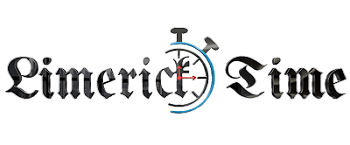The health sector is constantly evolving to meet growing demands for efficiency, accuracy, and patient-centered care in today’s fast-paced world. The Picture Archiving and Communication System (PACS) is one of the foundational technologies driving this change by transforming the storage, retrieval, and sharing of medical images. What are the intricacies behind PACS? How does it reshape healthcare delivery?
SepStream offers Enterprise PACS Imaging Solutions primarily in the healthcare and diagnostic imaging space. The website is in English language but could reach a global audience based on affordability, advanced features, and customer satisfaction around healthcare technology.
Presentation towards PACS
The picture filing and communication system (PACS) is a complete solution designed to simplify the management of medical images and associated information. Unlike conventional film-based methods, PACS digitizes radiological images, allowing for easy access, storage, and distribution across healthcare networks.
Digital Transformation in Radiology
PACS represents a major departure from the traditional practice of storing medical images on film to an electronic platform. By digitizing images, healthcare providers can access patient data instantly which leads to quicker diagnosis and treatment planning. In addition, digital pictures are less susceptible to damage or deterioration thus ensuring their durability and reliability.
Standardized Picture Administration
This ability to bring together the storage and management of images is one of the most important advantages of a PACS system. Doctors can store, retrieve, and view pictures from multiple modalities such as X-ray, CT scan, MRI, or ultrasound on a single platform. This integration eliminates the need for physical storage space while also simplifying the retrieval process thereby increasing operational efficiency.
Enhanced Visibility and Collaboration
What makes PACS better than traditional methods is that it overcomes geographical barriers so authorized individuals can access medical images remotely; this becomes useful when seeking expert opinion as it encourages cooperation between healthcare providers regardless of where they are situated. Also, having easy access to vital images fosters interest in communication, leading to informed decision-making and improving patient outcomes in general.
Integration with Electronic Health Records (HER)
Connecting PACS with an HER system enhances information sharing and continuity of care. Providers can gain a more holistic view of patient’s health histories by linking imaging data with their ongoing medical records, enabling them to take up personalized treatment strategies. This seamless integration also reduces the likelihood of errors associated with manual data entry by ensuring accuracy and completeness of the information.
Advanced Analytics and Artificial Intelligence
PACS capabilities are boosted through the incorporation of advanced analytics as well as artificial intelligence (AI) algorithms. Tools that AI powers can aid radiologists in image interpretation thus assisting them in identifying abnormalities besides offering decision support too. Additionally, machine learning algorithms can scrutinize large volumes of data sets for patterns or trends detection which may unveil useful insights for research and clinical practices alike.
Flexibility and Personalization
The systems of PACS are very adaptable as they cater to the growing needs in healthcare education at all levels. They can be tailored to fit specific requirements whether it is a small clinic or a large hospital network thus ensuring that they perform optimally and utilize resources well. Additionally, modular models allow for seamless incorporation of additional features and upgrades which makes the system future-proof against technological advancements.
Security of Data and Compliance
Healthcare institutions are required by law to ensure data security and comply with regulations like HIPAA since they handle sensitive patient information. There are strict measures implemented in PACS systems including encryption, access controls, and audit trails among others that guard against unauthorized access or breaches of patient data. Following regulatory requirements ensures confidentiality while also showing patients’ trust in providers’ commitment to safeguarding their privacy over healthcare records.
Cost Efficiency and Return on Investment (ROI)
While the initial cost of a PACS system may seem high, it is worth more in the long run. By optimizing workflows, reducing operational waste, and eliminating costly film-based processes, PACS delivers significant financial savings over time. Moreover, advanced diagnostic accuracy and faster turnaround times result in improved patient satisfaction and retention which further contribute to the system’s ROI.
Conclusion
In summary, PACS represents a paradigm shift in medical imaging data management which offers unprecedented efficiency, accessibility, and accuracy in healthcare delivery. Healthcare providers can unlock a treasure trove of benefits by adopting PACS including but not limited to streamlined workflows, enhanced collaboration, and improved diagnostic accuracy. The seamless integration of PACS with Electronic Health Records (HER) systems fosters data interoperability and care continuity thereby ensuring that patients receive individualized treatment plans based on holistic health experiences.
Moreover, the integration of progressed analytics and counterfeit insights (AI) calculations expands the capabilities of PACS, enabling radiologists with choice bolster devices and unlocking unused roads for investigation and clinical hone. With PACS, healthcare educators can scale their operations, customize arrangements to meet molecular needs and future-proof their systems against mechanical headways.
Read Also: WHY SHOULD YOU USE ELECTRIC STACKERS?

